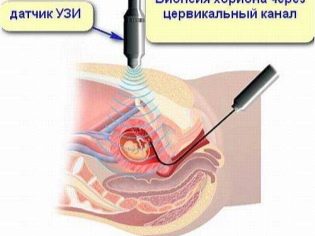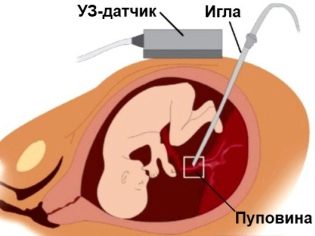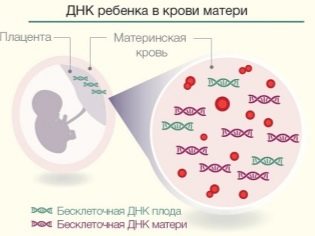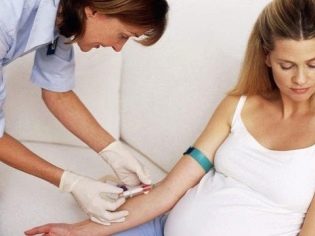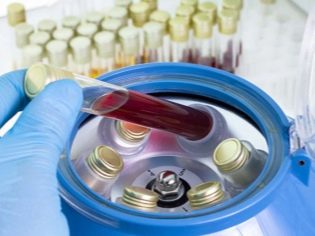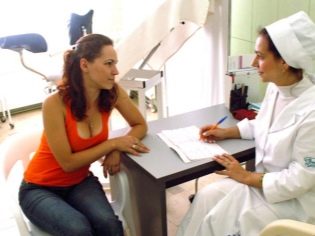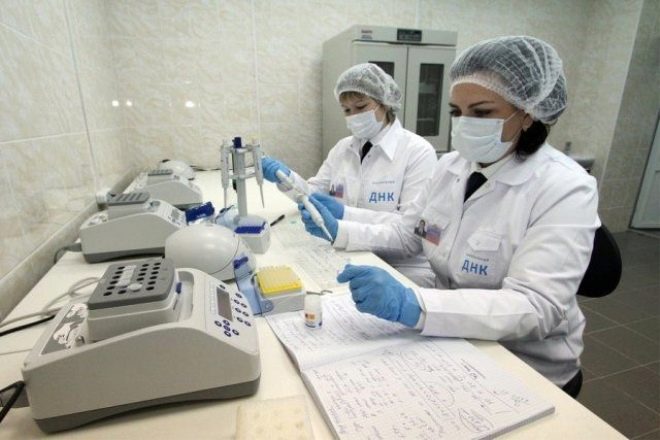Why do they test Panorama during pregnancy and what are the reviews about it?
Sometimes it is very necessary to find out whether the child is healthy in the womb. The unsatisfactory results of prenatal screening, hereditary diseases in the family - this is not the most comprehensive list of such situations. In order not to expose themselves and the baby to the risks associated with the invasive diagnosis of the mother, they turn to the latest non-invasive DNA tests.
What it is?
If a woman is given an increased risk of having a baby with chromosomal abnormalities, then geneticists often recommend invasive procedures. These include cordocentesis, amniocentesis, chorionic biopsy and some others. All of them are highly informative, but are associated with certain very real risks for the further continuation of pregnancy.
Puncture through the wall of the vagina or abdominal wall with subsequent collection of amniotic fluid, cord blood from the umbilical cord or chorion cells is fraught with the fact that it can provoke a miscarriage, infect fetal membranes and even mechanically injure the fetus.
A woman is warned about these risks, and only after that she can make a decision: to agree to such diagnostics or not. When medicine could not offer alternatives, there were two options: to make a test or not and carry the baby further, despite the possible chromosomal abnormalities in its development. Modern advances in medicine offer no less accurate than invasive, but safer diagnostics - prenatal DNA test.
Panorama is one type of such tests. Today it is considered one of the most accurate. We developed a test in one of the American scientific centers, and since 2013 it has appeared in Russia. Now it can be done on the basis of medical genetic centers and clinics. It allows you to answer the main question without unnecessary risk - whether the baby is healthy, while its accuracy is 96-98%.
How is it done?
No special preparation for the test is required. A woman needs to come to the laboratory of the medical genetic center or clinic and donate 20 ml of blood from a vein. All the rest will be done by specialists. At the same time, blood sampling is no different from the usual blood test that a woman regularly donates during the childbearing period in the antenatal clinic.
The resulting sample is placed in a centrifuge, where the mother's blood is divided into maternal and fetal blood. With the help of sequencing, it is possible to calculate two genomes: one belongs to the mother, and the other to the baby. Then the Panorama test is applied, which allows using the unique algorithms to analyze the baby's DNA.
The obtained results answer the question whether the child has a chromosomal anomaly or several. Wait for the result you need from 10 days to 14 days. Immediately it should be noted that the Panorama test, like other non-invasive prenatal tests, is not considered 100% accurate. Officially they fall into the category of screening studies.
Therefore, if a pathology is detected according to the results of the “panorama”, a woman will still have to undergo invasive procedures, because she cannot terminate a pregnancy for a long time without concluding and confirming geneticists.
Non-invasive tests (NIPT) are not sufficient for a woman to be allowed to terminate a pregnancy for medical reasons if she is not ready to give birth to a sick child.
Indications for use
For pregnant women, the Panorama test can be recommended from the 9th week of pregnancy. It is at this time in the mother's blood that the baby's red blood cells appear, and diagnostics becomes possible.
In the following situations, it is worth thinking about conducting such a test:
- compulsory screening for all pregnant women showed high risks of having a baby with abnormalities and pathologies;
- a woman’s past pregnancy ended with the birth of a child with a genetic pathology or abortion due to the development in the womb of such a child;
- the age of the future mother is over 35 years old;
- the threat of miscarriage, in connection with which it is technically difficult to conduct an invasive diagnosis;
- related marriage, pregnancy as a result of incest;
- obstetric history of women with several cases of miscarriages or non-developing pregnancies in the early stages.
Contraindications
A panorama test is not performed for pregnant women if the following factors occur:
- gestation period is less than 9 weeks;
- pregnancy with three or four children;
- surrogacy;
- multiple pregnancy resulting from in vitro fertilization using donor eggs;
- there was a surgery associated with bone marrow transplantation.
What determines the diagnosis?
The list of pathologies that the non-invasive Panorama test can determine is quite large. In this case, such a test is used even in the case when a woman is pregnant with twins, while most other options for multiple pregnancies are not informative.
If a woman bears one child, the test will answer questions about whether the baby has Down syndrome, Turner, Patau, Edwards, Klinefelter, as well as trisomy and disomy of the sex chromosomes, triploidy.
If a woman bears twins, which is multi-zygote, then the list of ailments defined by Panorama remains the same, with the exception of triploidy. With dizygotic twins, it is possible to assess whether there is a risk of having children with Down, Edwards and Patau syndromes.
In singleton pregnancies that occur with the help of IVF using a donor egg, Down Syndrome, Patau, Edwards and Turner are determined.
Advantages and disadvantages
Compared to invasive procedures, the Panorama test is safer and provides less anxiety and worry for pregnant women. A non-invasive test can be done earlier than an invasive test. Indeed, at 9-10 weeks of pregnancy, neither chorion biopsy nor amniocentesis is used. If the expectant mother has reason to worry, she can find out the truth even before a scheduled screening study is scheduled in consultation where she is registered.
This method with high accuracy as early as 9 weeks of pregnancy allows you to set the sex of the child. And this is a definite plus, especially in cases where there is a chance of inheritance of diseases based on gender, for example, hemophilia.
The disadvantages are the high cost and low availability of the test. Make it in any city will not work. It will be necessary to find those genetic medical centers that are accredited and licensed to conduct prenatal diagnosis, apply, wait for the call, and then maybe go to another city where the center is located to donate blood for analysis.
Waiting time also often causes complaints from patients, because 14 days for a woman who is waiting for an answer to such an important question lasts infinitely long.
There are significantly more genetic pathologies than tests define, and Panorama is no exception. Therefore, no one can guarantee that a child will be born completely healthy, even after a successful positive result of genetic testing. If there are no signs of trisomy 21 (Down syndrome) in his DNA, this does not mean that the baby does not have a different chromosomal pathology, which is not in principle determined by any of the existing tests.
How much is?
Depending on the clinic and the region of its location on average in the country, the cost of such an analysis starts from 34 thousand rubles and may exceed 55 thousand. Everything also depends on the completeness of the study, because the test can be carried out according to a simplified scheme, and can recommend an extended research platform. These prices are valid at the beginning of 2018 for such regions as Kazan, Moscow, Samara. Decryption is also included in the price.
Reviews
There are not so many women who did the Panorama test during pregnancy in Russia. This is due to the fact that they still know little about him, and not all gynecologists consider it necessary to inform the future mother about modern developments and techniques. Many stop the inability to pay as much as required, because it is a considerable amount.
However, those who have had the opportunity to undergo such an examination claim that the “panoramic test”, as future mothers call it, an excellent way out of a difficult and terrible situation that a woman finds herself in if she is told about the high risk of having a sick child.
Women argue that the money spent on the analysis is not a pity, because the result gave the answer to the main question, and this is more expensive than money.
You will learn more information about the Panorama test from the following video.


